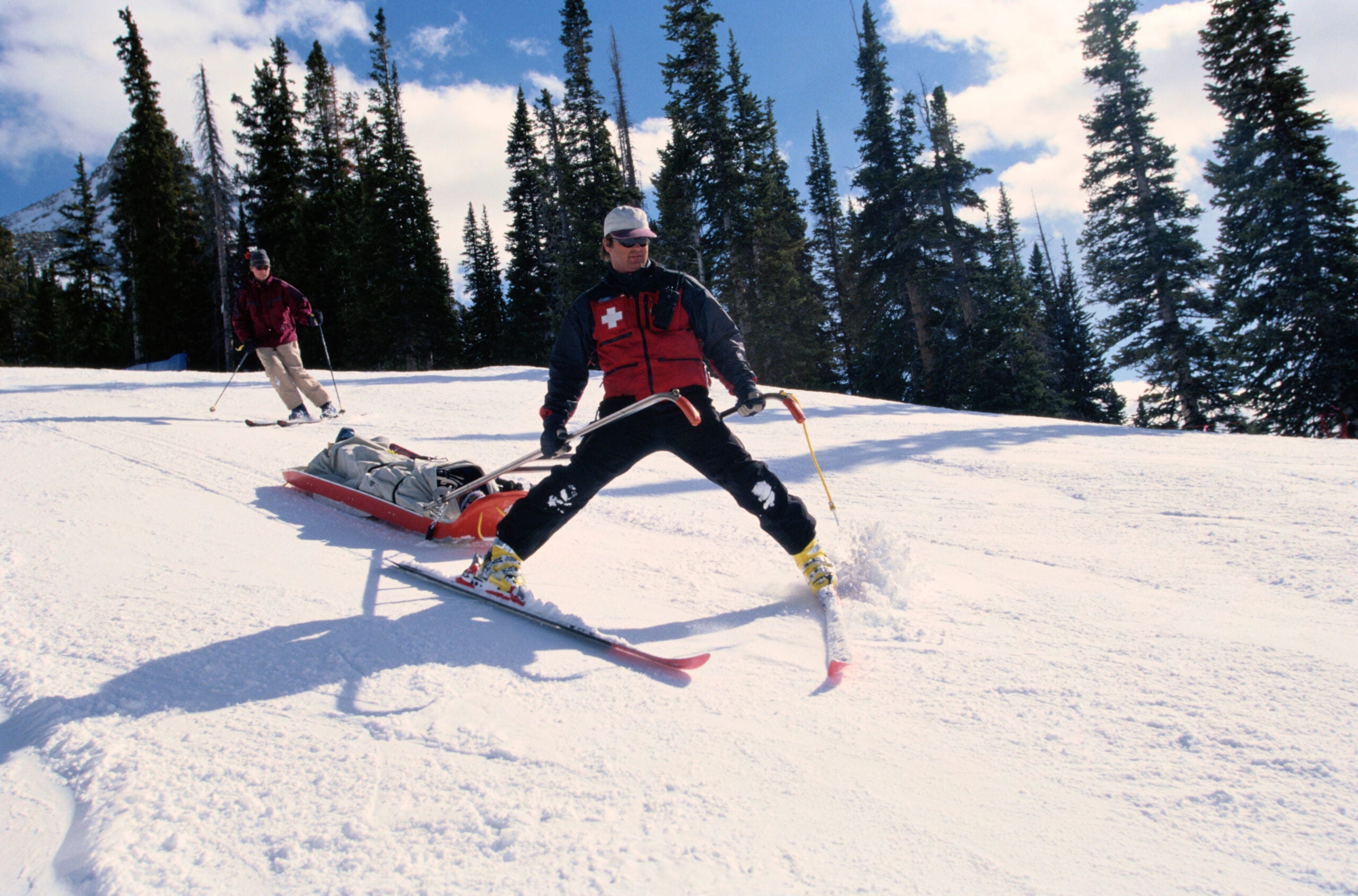Ski patrollers are living the life, right? After all, they get to ski for a living, dropping ropes on freshly covered slopes, snagging fresh powder turns, and soaking up the mountain vibes all season long.
┬а ┬а ┬а ┬аAlso Read:
In reality, thatтАЩs only a fraction of what ski patrollers are tasked with during a typical day on the job. From ensuring the safety of the slopes to evacuating injured skiers, the patrollers who help make our ski resorts hum have big, often dangerous jobs that most of us know very little about.
We tapped a handful of patrollers from all over the country to ask what a day in their life is really like and what sort of things surprise them, both about the job itself and the everyday skiers they encounter on the slopes.
15 Things That Will Surprise You About Ski Patrolling
The Number of People Who Call For тАЬCourtesy TransportsтАЭ
You might imagine, as we did, that skiers only call ski patrol for help when theyтАЩre seriously injured. ThatтАЩs not the case according to Jess Lyles, a seasoned patroller at Telluride Ski Resort, Colo.
тАЬIn Telluride we get called all the time for тАШcourtesy transports.тАЩ TheyтАЩre not injured but theyтАЩre tired or тАШcanтАЩt ski any longer.тАЩ ItтАЩs frustrating when weтАЩre busy trying to open terrain or help people who are seriously injured. ThereтАЩs a bit of a disconnect. YouтАЩre in the mountains and you need to be prepared to be in the mountains and get yourself down,тАЭ she says.
The Work It Takes to Get Someone Down the Mountain In a Toboggan
Knowing that people use ski patrol to expedite their route to afternoon lunch is even more frustrating when you consider the amount of skill thatтАЩs needed to get someone down the mountain in a toboggan.
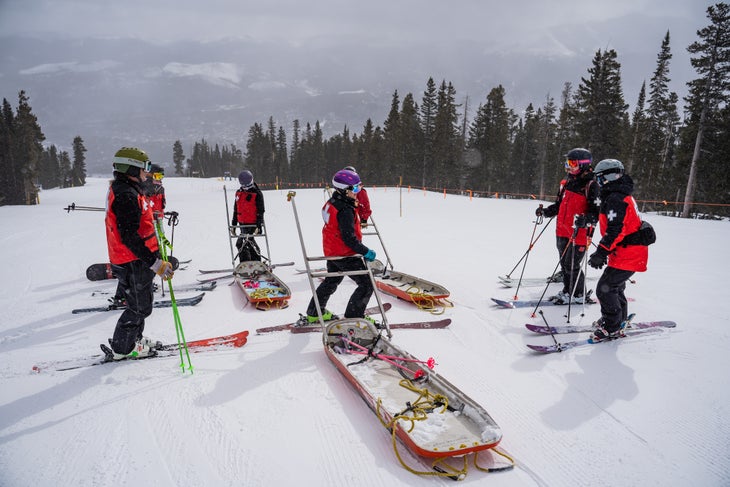
тАЬNearly every day of a patrollerтАЩs first year is dedicated to toboggan training. Learning the technique and building the specific strength that it takes cannot be understated,тАЭ says Joseph Puetz, a patroller at Colo.тАЩs Winter Park Resort. тАЬThe amount of skill it takes to take a toboggan down a black mogul run, and how many people it takes to get a person in a toboggan to our medical center, surprised me. The training that every patroller on our team endures to be able to bring an injured guest down a bump run in a toboggan is extensive.тАЭ
How Many People Get Cut By Skis
When it comes to safety, the focus tends to , but Lyles says that over the years sheтАЩs noticed an increase in the number of people who get cut by skis.
┬а ┬а ┬а ┬аGo Deeper:
тАЬMore people are getting cut by skis and weтАЩve seen some really bad lacerations either from a collision or from people falling on their own skis. WeтАЩve seen some arterial bleeds, which are really dangerous, and weтАЩre all required to carry tourniquets now. тАж ItтАЩs pretty crazy to see what a sharp ski edge can cut through,тАЭ she says.
Mother Nature Is Powerful, and WeтАЩre All at Her Whim
The wildness of the mountains and the power of Mother Nature were mentioned a lot by the patrollers we spoke with. After all, theyтАЩre the ones who have to deal with the ramifications of heavy snowfall (or adversely, not enough of it).
Drew Kneeland, who has been a patroller since 1994 and is currently the patrol director at Jackson Hole Mountain Resort, Wyo., remembers a storm cycle in February 2017 that left the entire valley helpless.
тАЬWind knocked over 17 power transmission towers along Highway 390, killing power to the ski area for several days, until a temporary line could be installed. All throughout that ordeal we received over 12 inches of water in the form of snow. тАж The power company had difficulties getting materials into the valley due to road closures, with avalanches impacting every transportation artery.тАЭ
The Hysterical Person Is Often in Better Shape Than the Quiet Person
In a collision, the person screaming and wailing is likely going to get all the attention, but Lyles says patrollers are taught to evaluate the symptoms of being тАЬwell or unwell,тАЭ and that often, the person who is quiet or confused after a collision is the real concern.
тАЬIn general I would say itтАЩs the quiet, confused head-injury-patients that are more worrisome than those who are telling you what is happening,тАЭ says Lyles, remembering a collision between two brothers-in-law. She was called to help the younger of the two men who says he was injured, but the other man, who she says was тАЬbehaving strangely and was reluctant to go to the medical centerтАЭ ended up dying from a brain bleed later on.
That People Want a DiagnosisтАФOn the Slopes
Yes, ski patrollers are trained in first aid and CPR. And no, that doesnтАЩt make them doctors.
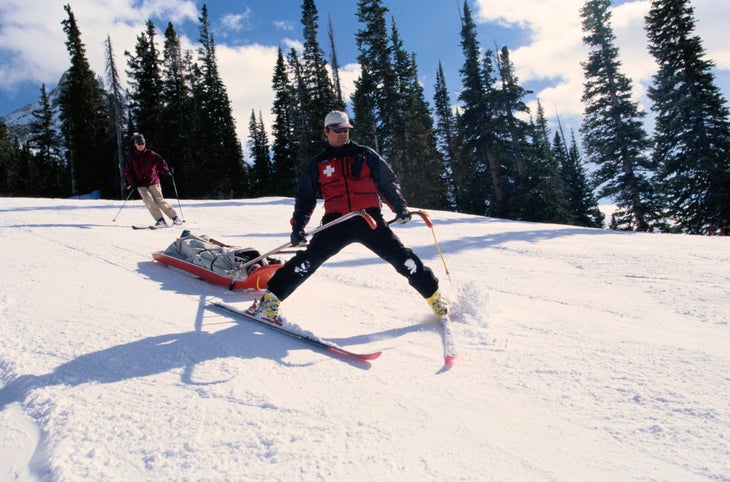
тАЬWeтАЩre not expected to diagnose anything, ever. Nor should we. WeтАЩre just expected to treat the patient the best we can and get them to higher care,тАЭ says Lyles, who says people often ask for a diagnosis on the slopes. тАЬThey want to know if they blew their ACL, but you have to have an MRI to know that.тАЭ
The Beauty of Helping Someone at Their WorstтАФOr Assisting Someone New to the Sport
If youтАЩve ever gotten injured on the mountain, you know how vulnerable it feels to be laying there waiting for help not knowing how bad your injury is or how youтАЩll get down the mountain.
тАЬHelping someone on their worst day, and being able to change their lives,тАЭ is one of the most meaningful parts of the job to Marc Barlage, who is a patroller and the intermountain division director at UtahтАЩs Brighton Resort.
Similarly, Winter ParkтАЩs Puetz loves being able to give guests, especially those who are new to the mountain or the sport, insider tips. тАЬI look forward to helping a visitor navigate the mountain, give them a tip as to which runs are skiing the best that day, status of a specific lift line, when a rope is going to drop for the first time of the season, where the coldest beer is, etc,тАЭ says Puetz. тАЬThe annual ski trip out West with my family was the best week of my entire year growing up, and I hope to have a small part in helping everyone be the most stoked while theyтАЩre here.тАЭ
The Pressure Skiers Put on Patrollers to Open Terrain
If youтАЩre reading this, and you love powder, youтАЩve probably peered down at a pristine, roped-off powder field, wondering what was taking ski patrol so long to drop the rope. According to Lyles, this sort of reaction is one of the most frustrating parts of the job.
тАЬPeople are annoyed by terrain not opening when they think it should be, but they donтАЩt know why itтАЩs not,тАЭ she says. тАЬYou get a lot of pushback from people who want to be skiing and they donтАЩt understand why it might not be safe. I think people are really unaware of the complications and challenges of opening terrain. тАж being aware of the wind, the weather, what kind of explosives were used, or need to be used in order to make sure that slope is safe.тАЭ
Deciding to open terrain always comes with risk, Lyles explains. They have to ask themselves: тАЬAre we ready to put people without avalanche rescue gear on this terrain?тАЭ
What It Really Takes to Mitigate Avalanches
If youтАЩre a backcountry skier, you likely have some idea of how many factors go into snowpack evaluation. Now, imagine you not only have to read the snowpack, but must strategically throw bombs to trigger avalanches before making the decision to allow thousands of skiers to tear up the slope.
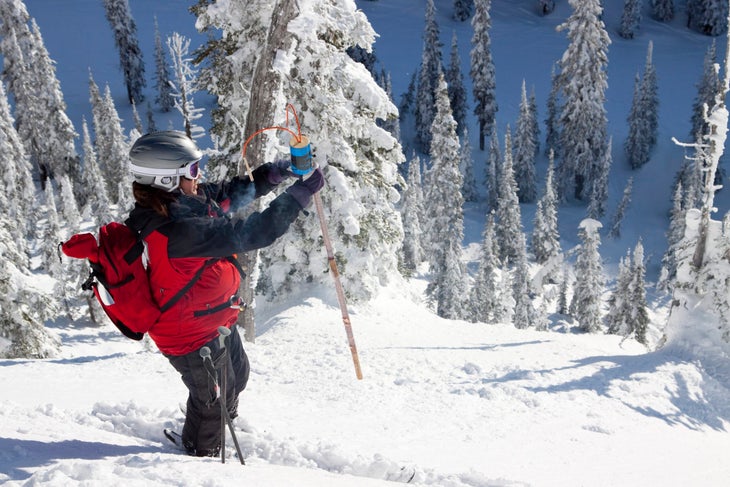
тАЬI grew up skiing in the Midwest, and all of my skiing was on machine-made snow (ice). I had little exposure to snow science and was completely ignorant to the intricacies of snowpack and how to mitigate avalanche hazard,тАЭ says Puetz. тАЬI think guests at Winter Park would be surprised to learn how much work goes into mitigating hazards. We have a full-time snow safety team that literally works around the clock to ensure the safety of guests, when itтАЩs safe to open avalanche terrain, and how to mitigate potential hazards.тАЭ
It Takes a Lot of Training to Become a Patroller
ThereтАЩs a reason more and more to gain job security and higher wages: ItтАЩs a job that requires a lot of training and some very specific skills.
тАЬAnnually, all patrollers are required to go through OEC [Outdoor Emergency Care], CPR/AED, and OET [Outdoor Emergency Transportation] refreshers and, depending on mountain operations, may go through other training such as lift evacuation, snowmobile operation, incident investigation/risk management, avalanche mitigation, and low angle rescue,тАЭ explained Kristen Russo, a patroller and national womenтАЩs program advisor at Holiday Valley Resort in New York.
The longer you stay with patrol the more specific your training becomes. тАЬWe have team members that are experts in weather forecasting, avalanche forecasting, search and rescue with dog teams, explosives, and high-angle rescue to name a few,тАЭ says Puetz.
ThereтАЩs More to It Than Skiing and Rescuing People
Most people tend to focus on the heroism and glamor of ski patrolтАФdropping from a helicopter for a high-angle rescue or getting first tracks on closed terrainтАФbut a day in the life of a patroller includes plenty of thankless, behind-the-scenes work.
тАЬWe set up and check signs and fences, we shovel snow, we check equipment, assess avalanche risk, we take turns at top dispatch, we do training to maintain and improve our first aid and ski/toboggan skills,тАЭ explains Colleen Finch, a patroller at Showdown in Montana.
Alex Bash, who patrols at Winter Park Resort, notes that тАЬWhat the public doesnтАЩt see is the hours to days, if not weeks, of work we put into helping create a product. All of the two-stepping, ski packing, boundary ropes, avalanche mitigation, signs, chainsaw work, snowmobile work, lift evac training, rope rescue training, first aid training, and the list goes on and on.тАЭ
The Job Is More Than Just a Job
Almost every patroller we spoke to mentioned the tight-knit community they found when they started patrolling.
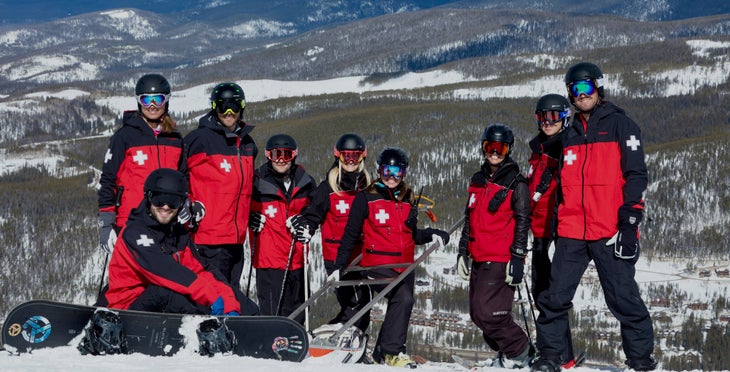
Kneeland, who has been a patroller for 30 years, says, тАЬI would not have anticipated that I would have made a career of ski patrolling, or that it would be such a large part of my identity and life. I have made life-long friendships with my coworkers, and it continues to amaze me that the next generation of patrollers is still just as passionate about patrolling as I was when I started out.тАЭ
Lyles says that when she lacerated her spleen early on in her ski patrol career тАЬpeople I had just met were offering to help pay for my medical bills and making sure I was taken care of. It really felt above and beyond.тАЭ
Patrolling Can Be a Year-Round Position
For many ski patrollers, the work is seasonal, but more and more patrollers are finding steady, year-round work on the bike parks that open once the snow melts.
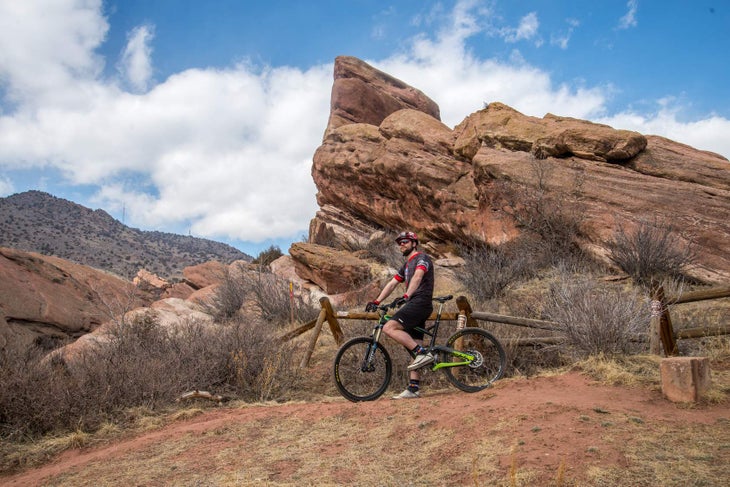
тАЬLike many patrollers, I have begun helping with ,тАЭ says Tom Byron, a ski and bike patroller at Massanutten Resort in Virginia. Similarly, Bash notes that, тАЬI thought this job would be a temporary, seasonal job; oh, how I was wrong. Today, I work full-time, year-round as a professional ski and bike patroller.тАЭ
How Much Cool, Fun Stuff They Get to Do
Anyone who signs up for ski patrol is aware of the perks, but thatтАЩs just one of the many aspects of the job. Some patrollers, like Bash, note that, тАЬI have a few extra duties that really make this job the best job in the world. I am a founding member of our avalanche rescue dog team. IтАЩve had the privilege of training at some of the nationтАЩs best dog schools.тАЭ
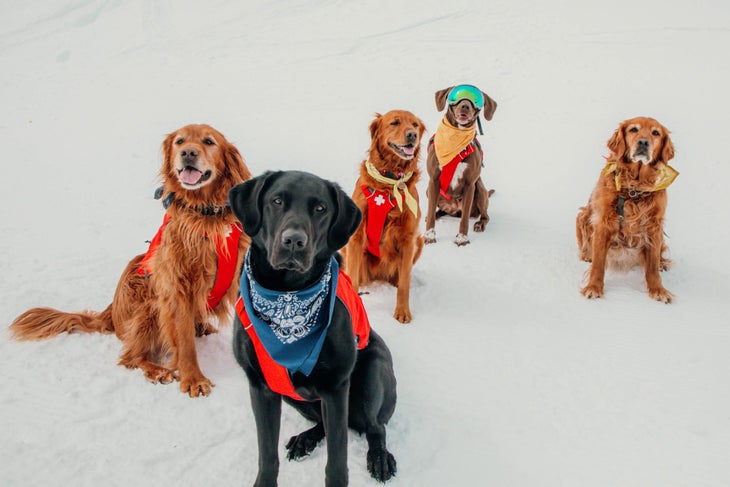
Beyond heading up the pup patrol, Bash ventured into backcountry rescue. тАЬIтАЩve flown in helicopters and assisted in multiple backcountry avalanche rescues. IтАЩm also a full-time member of our avalanche control team. I get to go out every morning and throw bombs in our avalanche terrain.тАЭ
How Much They Love Being Out There, In the Stillness, In the Cold
Waking up before sunrise in below-zero temperatures to work outside and skiing down after dark is not something most people would call a perk, but several patrollers say that this is their favorite part of the job.
тАЬI love to be the first one on the lift in the morning and the last one sweeping the mountain at the end of the day. Those are beautiful and quiet moments I value,тАЭ says Finch at Mont.тАЩs Showdown.
Barlage at Brighton Resort concurs: тАЬThe quietness in the morning, fresh snow, breaking trail to get out, and setting up the explosives to mitigate avalanches. Being able to ski first tracks on the mountain before anyone gets there, as well as the last turns at night before closing when we make sure everyone is off the mountain.тАЭ


